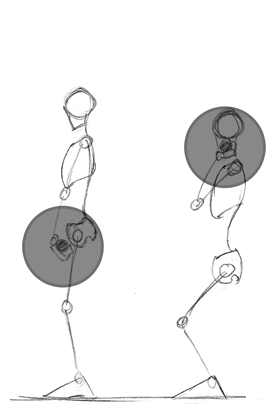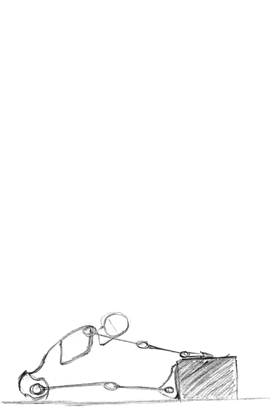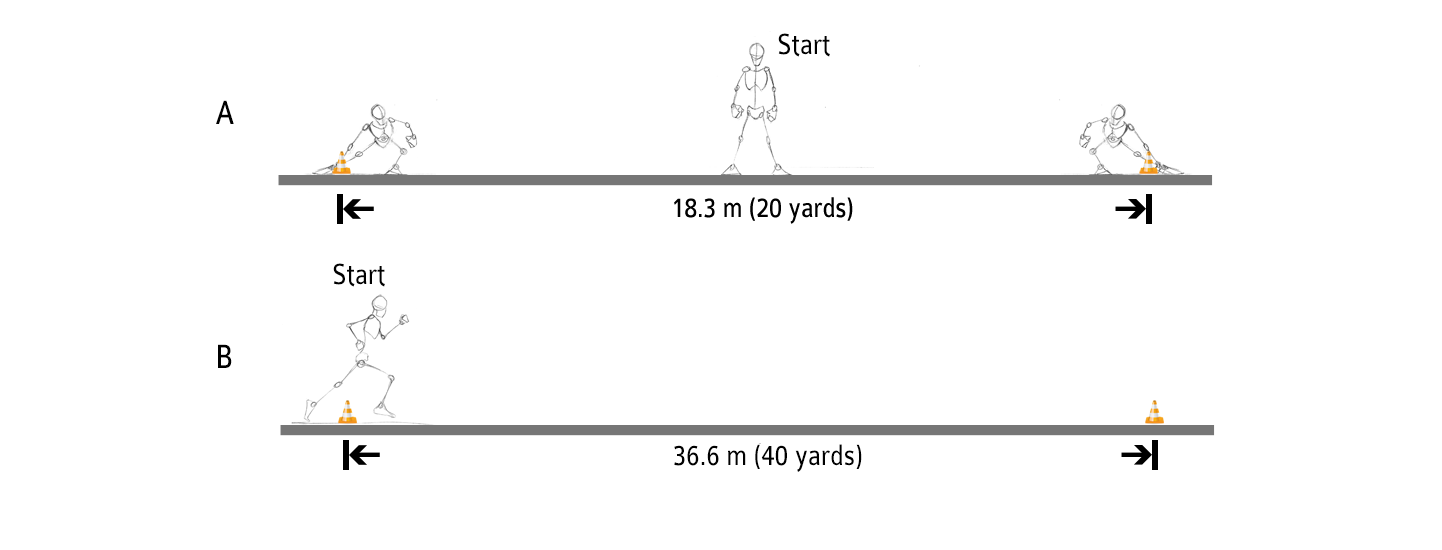
American football is, as its name suggests, a sport of American origin very popular across the Atlantic. It is a game of "Win field" type where the goal is to stay as long as possible in possession of the ball and to travel as far as possible to reach the opponents' in-goal. The rules require the team in possession of the ball must travel 10 yards minimum (or 9.1 meters) in 4 attempts, otherwise the ball is recovered by the opposing team. For more information on the rules of the sport, we advise you to browse the Wikipedia page dedicated to American football for a global overview or refer to the official rules available on the website of the NFL.
The playing phases are brief and intense, so they require the players physical qualities of speed, strength, power and agility. In addition, these parameters vary according to the positions occupied by the different members of a team. Therefore physical training plays a very important role in training programs before, during and after the competitive season. The objective is to maintain or improve the main physical qualities of each player.
To systematically follow the players' progress, numerous specific tests have been set up. The sprint on 36.6m (i.e., 40 yards), the shuttle test on 18.3m (i.e., 20 yards) and the vertical jump are among the most representative field tests of American Football, but also the most used. Some studies have shown that these tests are strongly correlated with the level of the players and the division in which they evolve at the university level. But is there a significant link between the anthropometric and physical parameters of footballers and these tests ?
To answer this question, in 2004, a team of American researchers from West Virginia University investigated the links between anthropometric and physical variables and the sprint and jump tests of Division I university players NCAA. Data from 46 West Virginia University footballers from a training camp in the summer of 1999 was retrieved and analyzed retrospectively.

Figure 2. Hang Clean

Figure 3. Sit & Reach

Figure 4. Vertec Vertical jump
For the anthropometric data of each player, the researchers chose to examine the body mass (in kg), the percentage of fat mass (in%) measured using the 3-skinfold method and the height (in m) (Fig. 1). For physical data, the following variables were determined :
Field tests used in this study included :

Figure 5. The 40yard sprint and the 20-yard shuttle tests.
From the results obtained during these evaluations, the researchers carried out a statistical analysis to find out which anthropometric and physical variables were the most strongly correlated with the different field tests. This allowed them to determine a mathematical model to best predict performance for each field test.
Table 1 presents the mean results as well as the minimum and maximum values obtained in the various tests by American University football players in Division I :

Regarding the 40-yard sprint test, body mass, 1RM Bench Press and 1RM Hang Clean are significantly correlated with performance. Body mass is positively correlated with time over 40 yards which means that heavier the weight, slower the sprint. The other two variables are negatively correlated. The mathematical model to predict the performance on this type of sprint from the 3 variables mentioned can explain for 85% the variability of the results over 40 yards :

With t40 yards the time over 40 yards (in s), BM body mass (in kg), BP1RM the 1RM bench press (in kg) and HC1RM the 1RM Hang Clean (in kg).
Concerning the 20-yard shuttle test, body mass, 1RM Bench Press and 1RM Hang Clean and the Sit & Reach test are significantly correlated with performance. Body mass is positively correlated with time, which means that heavier the weight, slower the sprint. The other three variables are negatively correlated. The mathematical model for predicting the performance on this type of test from the 4 variables cited makes it possible to explain for 81% the variability of the results :

With tshuttle, the time on test shuttle 20 yards (in s), BM body mass (in kg), BP1RM the 1RM bench press (in kg), HC1RM the 1RM Hang Clean (in kg) and S&R the Sit & Reach test (in m).
Regarding vertical jump, none of the anthropometric and physical variables were significantly correlated with jump performance. This did not allow to determine a reliable model.
This study makes it possible to emphasize that certain physical characteristics such as strength and agility are essential components of field performance in American football. The body mass is a determining variable in both models, which is not the case of the percentage of body fat. This implies that the most important thing is to have a high strength / body mass ratio. Moreover, it is not specified in this study that the researchers considered the playing position of each player.
The significant correlation of maximum strength in Bench Press and Hang Clean in both sprint tests can be explained by the need for players to have to balance the maximum strength of the upper and lower body. In the field, the upper limbs are solicited during all the actions of play, while the upper limbs make it possible, for example, to push the opponents.
The two sprint performance prediction models can be used by coaches and physical trainers to evaluate resistance training progress. It is nevertheless recommended to set up this protocol several times a year on its own players, and to determine its own mathematical models of prediction. Here, several points could be improved. Firstly, the time performance during sprints should be evaluated using photocells, which are much more sensitive, reliable and reproducible than manual timing. The measurement of body fat should be performed on the basis of the method of 4 skin folds, much more validated than the 3 folds. And finally, these models are just statistical models, and didn't imply necessarily a cause and effect relationship.
We remind you that you can quote articles by limiting your quotation to 200 words maximum and you must include a nominative link to this one. Any other use, especially copying in full on forum, website or any other content, is strictly prohibited. In doubt, contact us.
Copyright © 2011-2024 - www.sci-sport.com - All rights reserved